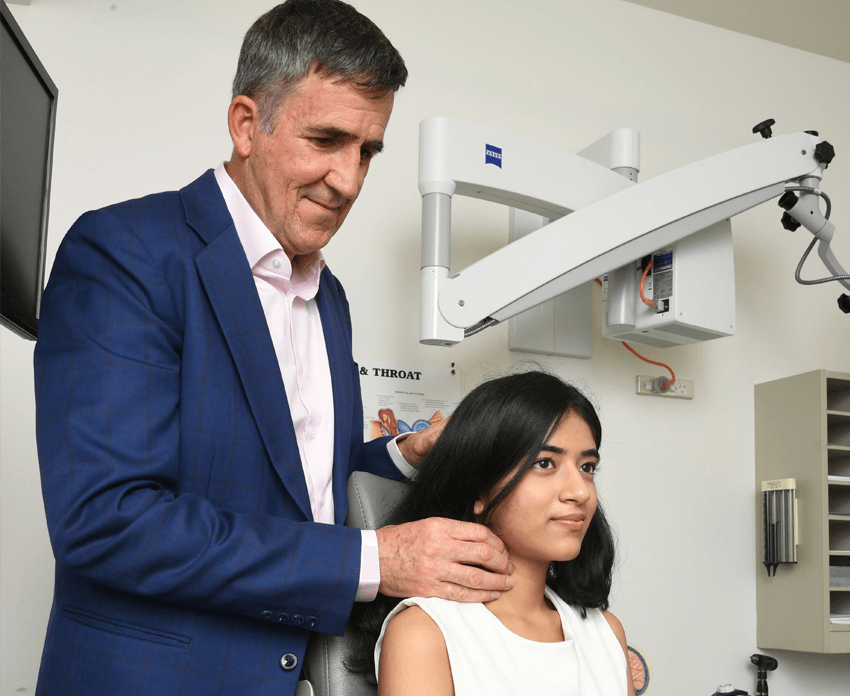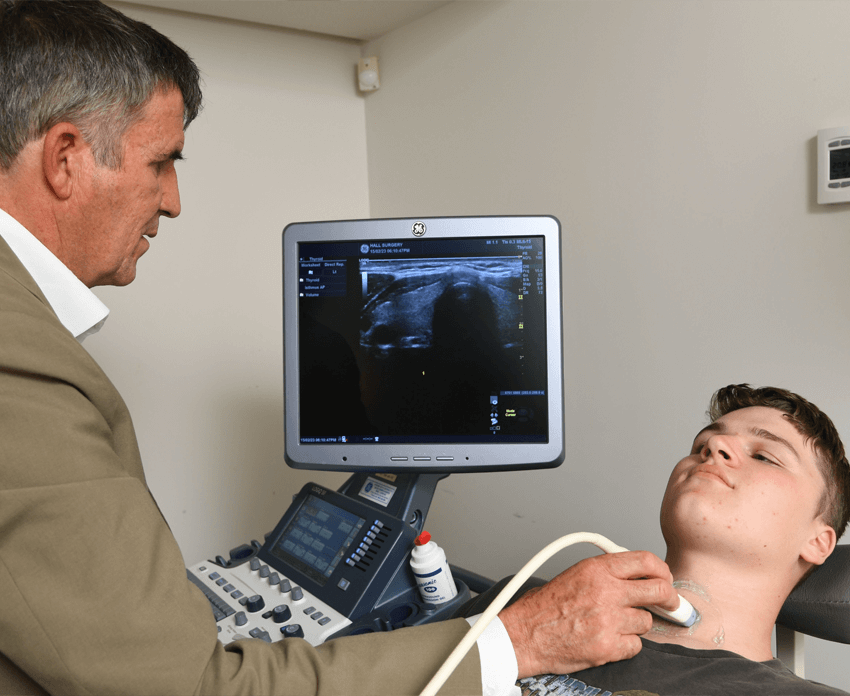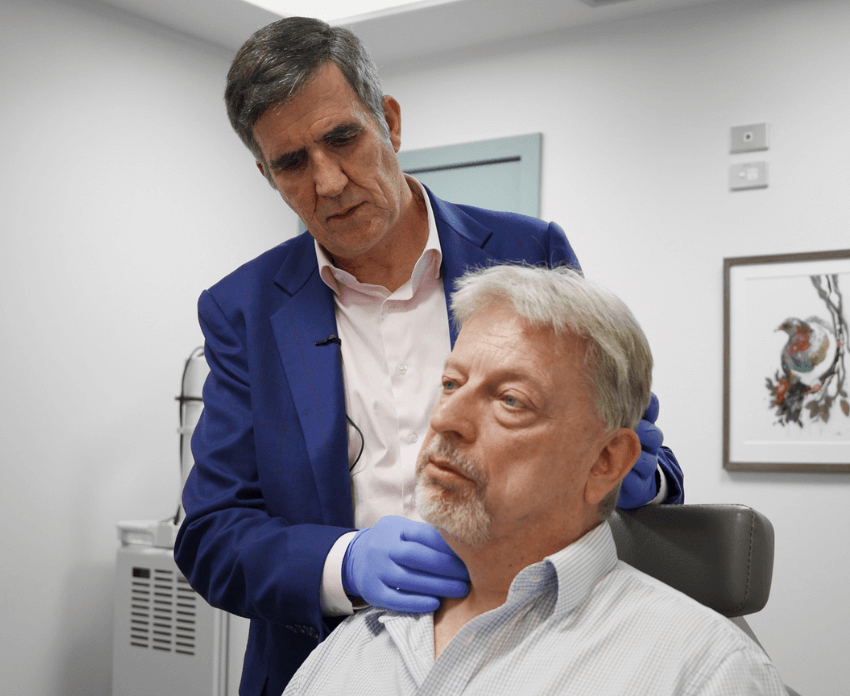Neck Lumps and Ultrasound Diagnosis
There are many types and causes of neck lumps. Neck lumps in children are usually congenital due to infections or inflammation. If an adult has a neck mass, it is important to make sure that the neck lump is not cancerous. Dr. Francis Hall is an expert in diagnosing neck lumps (neck lump differential diagnosis) and will advise you on how best to treat your neck lump.
Neck masses are broadly classified into the midline and lateral neck masses. A lateral neck mass occurs on the side or back of the neck.



Neck Lump Differential Diagnosis
To determine whether your neck lump is either benign or cancerous, Dr. Francis T. Hall will take a history and do a thorough examination including flexible endoscopy. Flexible endoscopy involves numbing the inside of the nose with local anaesthetic spray and inserting a tiny, flexible camera through the nose to evaluate the nose, throat (pharynx) and voice box (larynx). Additionally, an ultrasound scan of neck lump may be performed. An ultrasound guided needle biopsy, fine needle aspirate (FNA) is sometimes performed to collect a sample from the lump. This is a minor procedure, where a small needle is guided under ultrasound and a sample is collected. The sample is sent to a laboratory for testing. After investigation, the result will generally fall into three general categories – benign, intermediate (possibly malignant) and malignant (cancer).
Ultrasound Diagnosis and Ultrasound Treatments
Ultrasound uses sound waves to image structures that lie deep to the skin. An ultrasound scan can give a lot of valuable information about organs, lymph nodes, lumps, thyroid glands, parathyroid glands, salivary glands (parotid and submandibular glands) to name just a few. An ultrasound scan of the thyroid will tell if a nodule (lump) is solid or a cyst and if it has any concerning features, for example an irregular margin or suspicious calcifications (punctate echogenic foci). An ultrasound scan of the salivary glands can tell if the gland is inflamed, if there is a tumour and if there is a calculus (stone). An ultrasound scan of a lymph node can often tell if the lymph node is suspicious for cancer.
Ultrasound Investigations
Using an ultrasound, a fine needle can be guided into a lump and a sample of that lump obtained. This sample is sent to the laboratory and examined under a microscope. This procedure is called an ultrasound guided fine needle aspirate (FNA) and is very useful in the evaluation of thyroid nodules, tumours of the parotid or submandibular gland and lymph nodes. A similar procedure can be performed with a larger needle (core needle biopsy) which enables a larger sample to be obtained.
Ultrasound Treatments
A cyst can be drained with a needle guided by an ultrasound.
Botox is good treatment for a collection of saliva (sialocele), or saliva leaking through the skin (salivary fistula) sometimes seen after parotid surgery. Botox is injected into the area under ultrasound guidance.
Ultrasound guided Botox treatment works very well for Frey’s syndrome (gustatory sweating), first bite syndrome and for drooling. Patients with recurrent swelling and pain in the parotid gland (sialadenitis) that has not responded to other treatments can benefit substantially from Botox carefully injected into the gland under ultrasound guidance.
Dr. Hall and Ultrasound
Dr. Hall has been performing ultrasound, ultrasound guided FNA and ultrasound guided core needle biopsies since 2007. He has performed numerous ultrasound guided treatments (cysts, sialocoeles, Frey’s syndrome, first bit syndrome, drooling patients and recalcitrant sialadenitis). He has trained in ultrasound, attending courses, attended lectures, been a course director on an ultrasound course, teaches ultrasound to junior doctors and colleagues and been on a review panel for ultrasound procedures.

